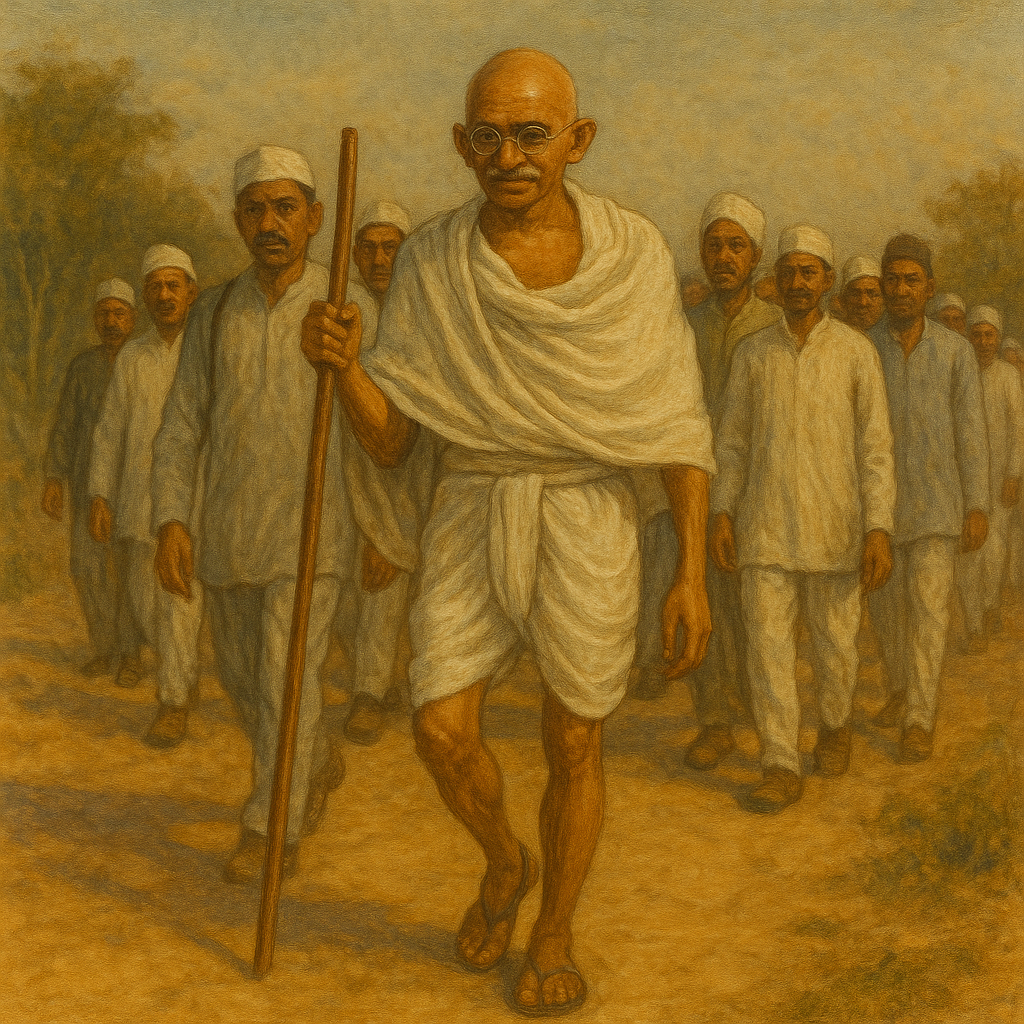Lesson 1: Nationalist Movements in Asia (The Postwar World)
The Call for Indian Independence
India was part of the British Empire. But many Indians wanted freedom.
Mahatma Gandhi 👣
One leader was Mahatma Gandhi. He believed in nonviolence. He told people to fight with words and peace, not guns.
✋ Story: In 1930, Gandhi walked 240 miles to the sea to make salt. This was a protest against British salt laws. Thousands joined him! It became known as the Salt March.
During World War II, many Indians said, “We will not fight for Britain unless we are free!” After the war, Britain was weak. In 1947, India finally became independent.
But independence brought pain, too. The country was split into two: India (mostly Hindu) and Pakistan (mostly Muslim). Many people moved, and there was violence between groups.
🧳 Fact: Around 15 million people had to leave their homes during this time, one of the largest human migrations in history.
🐉 The End of Imperial China
China had emperors for thousands of years. But in 1911, the last emperor left the throne. A new republic began, but it was weak and divided.
The Civil War ⚔️
Two groups fought for power:
The Nationalists (led by Chiang Kai-shek)
The Communists (led by Mao Zedong)
They fought a long and bloody war. During World War II, they stopped fighting to fight Japan. But after the war, the civil war continued.
In 1949, Mao and the Communists won. He created the People’s Republic of China.
🏞️ Story: Mao led the Long March—a 6,000-mile journey through mountains and rivers. Many soldiers died, but it became a symbol of bravery for Communists.
The Nationalists ran to Taiwan, where they started a new government.
🗾 A New Japanese Empire
Japan was a small island country, but it wanted to be powerful like the West. So it began to expand.
In the early 1900s, Japan defeated Russia in war—shocking the world! It also took parts of China and Korea.
⚔️ Fact: Japan became the first Asian country to defeat a European power in modern times.
But Japan didn’t stop. It wanted to control more of Asia. This led to problems with the U.S. and World War II.
After World War II, Japan lost its empire. The U.S. helped rebuild the country. Japan became peaceful and modern, and focused on technology and trade instead of war.
🎮 Story: In the 1980s, Japan became famous for its cars and electronics. Kids around the world played with Nintendo, a Japanese company that began in Kyoto in 1889!
